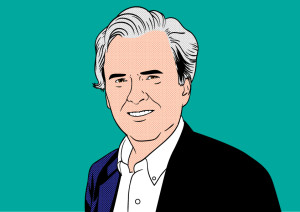How to Avoid Merging Into Oblivion: Three Steps to Save Your Credit Union
By Robert McGarvey
For Cu2.0
Should you applaud, cry, or scream?
That’s my question as I read a Credit Union Times story headlined “NCUA Approves 14 Mergers in June” — “Credit union consolidations for the first half of the year decline from last year.”
So far this year NCUA has approved 87 mergers which, CUTimes pointed out, is down from the 95 it had approved at this point last year.
Say 120 credit unions merge out of existence this year. Where will that leave the credit union count?
According to CUNA in March there were 5644 credit unions. That’s down from 6680 five years ago.
Do the math. In 2028, there probably will be under 4500 credit unions. Maybe fewer than 4000.
That kind of musing recently led marketer Bo McDonald to post a column at CUInsight headlined “The last credit union in America is….”
He recalled Blockbuster – once ubiquitous in America, now largely forgotten. Are credit unions headed that way, he asked.
Good question.
It doesn’t have to end there but if credit unions don’t embrace the bleakness of their futures, the industry may well wind up as a footnote in business history books.
Big banks keep getting bigger. Chase, Wells Fargo, Cit, Bank of America are growing. They long ago began measuring their bulk in trillions of dollars
And community banks and credit unions keep faltering. Add all credit union assets together and they about equal the holdings of one big bank. Just one.
A sliver of good news in the CUNA data is that credit union assets and membership both are up.
But you have to be worried about the question of when do credit unions become statistically unimportant.
And when does NCUA seem as needed as, say, an agency to regulate farriers and another to oversee typewriters.
It’s not that bad? Not yet. But the trends are plain.
There is a path to a brighter tomorrow. Technology, in its essence, is a great leveler. Smart, hungry credit unions can and are riding the digital transformation rails and are building institutions that will thrive for years to come. Digital transformation has emerged as a must do for credit unions that want to survive and thrive.
Know that a healthy future is digital and that gets you moving in the right direction.
And then there is still more that needs doing. Such as? Just three steps will help credit unions move into that brighter future and, you bet, this is all about rocking the boat. But when the boat is sinking, what does a little rocking matter?
Here are your three to-do’s:
Make big data your life blood. Increasingly, data is the plasma that produces business health and credit unions have the ability to create big data insights that will rival what Chase and Citi produce. Communal data lakes are within reach and very probably will be up and running in 2019.
No, a credit union does not have enough data on its own – but when 1000 join together to share data, they collectively have what they need.
Make your mobile world class. Increasingly, too, mobile is the contact point that will matter to members (definitely not branches!) – but smart credit unions recognize that reality and at least some are busy developing their own mobile apps.
That’s a tough order for smaller credit unions – really any institution below $500 million in assets, which is around 90% of credit unions. My advice to those institutions is to lean on your vendors, hard, and demand a mobile app that is as good as Chase’s and also Venmo and if they can’t produce, find a vendor who can.
Make your core system work for you, not the other way around. It’s ridiculous: many credit unions let their core systems, often 20+ years old, set their technology limits. The limitations of their cores shape what online banking provider they will use, what mobile provider, often what payments processor.
That has to stop. It makes as much sense as creating a shrine for an old Burroughs adding machine and saying daily prayers to it.
Start now to lessen the dominance of the core in your institution’s technology decisionmaking and, sure, I know that won’t be easy.
But going out of business isn’t easy either.
Think on it.
